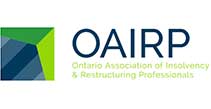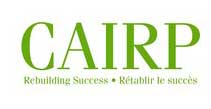Expert guidance on filing bankruptcy without assets—learn how to eliminate debt, understand surplus income rules, and decide if bankruptcy or a consumer proposal is right for you.
Filing Bankruptcy with No Assets in Ontario
Yes—you can file for bankruptcy even if you have no assets, no income, or are currently unemployed. Many people mistakenly believe that declaring bankruptcy is only for those who own a home, vehicle, or other valuable property. In reality, bankruptcy exists to help anyone who is unable to repay their debts, regardless of what they own.
If you’re struggling to pay bills, facing collection calls, or dealing with wage garnishments—even without owning anything—bankruptcy can stop all collection activity and give you legal protection from your creditors.
Common Misunderstandings About Bankruptcy Without Assets
- Myth: You need to have something to lose to file bankruptcy.
Truth: Bankruptcy is based on your inability to pay—not your assets. - Myth: Being unemployed disqualifies you.
Truth: If you have no income or are relying on Employment Insurance, pensions, or social assistance, you’re still eligible. - Myth: Bankruptcy is overkill if I own nothing.
Truth: Even with no assets, bankruptcy can erase large amounts of unsecured debt like credit cards, payday loans, and tax bills—giving you peace of mind and a fresh start.
Why Bankruptcy Still Makes Sense When You Own Nothing
If you’re insolvent—meaning your debts are more than your assets, and you can’t pay them when they’re due—you qualify for bankruptcy under Canadian law. Many people who file have little to no property, especially after a job loss, illness, or life disruption. What matters most is your financial situation, not your possessions.
Even with no money or property, filing bankruptcy can:
- Stop interest from growing on your debts
- Eliminate most unsecured debts permanently
- End calls from collection agencies
- Protect your future income (with some limits on high earnings)
If you’re unsure whether bankruptcy is the right choice for you, our local Licensed Insolvency Trustees can review your situation and explain all your options—often at no cost.
What Happens During a No-Asset Bankruptcy?
Filing bankruptcy when you have no assets is more common than you might think. The process is designed to help people who are deeply in debt, even if they don’t own anything of significant value. While you won’t have assets to surrender, you still need to follow specific steps and meet legal obligations under the Bankruptcy and Insolvency Act.
Step-by-Step Overview of the No-Asset Bankruptcy Process
Here’s what typically happens when you file for bankruptcy with no assets:
- Initial consultation: You’ll meet with our Insolvency Trustee (LIT) to review your financial situation and determine whether bankruptcy is your best option. This consultation is free.
- Filing the paperwork: If you choose to proceed, your trustee will prepare and file the necessary documents with the Office of the Superintendent of Bankruptcy.
- Stay of proceedings: Once filed, creditors must immediately stop all collection efforts, including calls, wage garnishments, and lawsuits.
- Monthly reporting: Even without assets, you must report your income and expenses each month. If your income is low, you may not need to make any payments—but if your income rises, surplus income rules may apply.
- Financial counselling sessions: You’ll be required to attend two credit counselling sessions. These help you learn how to manage money, rebuild credit, and avoid future debt problems.
- Bankruptcy discharge: After 9 months (or longer if you earn surplus income), you may receive an automatic discharge, which legally eliminates your remaining eligible debts.
The Role of the Licensed Insolvency Trustee
Your trustee plays a key role in guiding you through the entire process. They will:
- Review your finances and help you understand your options
- File all legal documents and notify your creditors
- Monitor your income and expenses
- Conduct any necessary reviews or reports
- Apply for your discharge when all requirements are met
Even in a no-asset bankruptcy, your trustee is responsible for making sure you comply with the law and that your creditors are treated fairly. Their goal is to help you complete the process as smoothly as possible so you can move on with your life.
What If You Have Small Items of Value?
Most people are allowed to keep basic necessities like clothing, household goods, and sometimes a modest vehicle. Each province has its own list of exempt assets that you do not have to give up during bankruptcy. Your trustee will explain what you can legally keep based on your personal situation and location.
Declaring bankruptcy without property or assets is possible, stopping bills, payments and fees and penalties. We’ll give you a fresh start!
How Income Affects Bankruptcy Even Without Assets
Even if you don’t own a home, car, or any valuable property, your income can still affect how your bankruptcy is handled. That’s because of something called surplus income rules—a federal guideline that requires higher earners to make monthly payments during bankruptcy, even if they have no assets.
What Is Surplus Income?
Surplus income refers to the money you earn that’s over a set monthly limit. This limit is based on the size of your household and is adjusted yearly by the Office of the Superintendent of Bankruptcy. If your income goes above that threshold, you’re required to pay 50% of the excess each month to your trustee, who distributes it to your creditors.
Example: Surplus Income in Action
Here’s a simplified example:
- Mark has no assets and is the sole provider for a family of four
- The government’s monthly threshold for a family of four is $4,850
- Mark earns $5,200 per month after taxes
- His income is $350 over the limit
- Mark would be required to pay $175/month in surplus income (50% of $350)
Even though Mark doesn’t own anything, his income creates a payment obligation.
Will This Affect the Length of My Bankruptcy?
Yes. Surplus income payments also extend the length of your bankruptcy:
- No surplus income: Discharged in 9 months (first-time bankruptcy)
- With surplus income: Discharged in 21 months
- Second-time bankruptcy with surplus income: Up to 36 months
Your Licensed Insolvency Trustee will review your income throughout the process and adjust your payments if your financial situation changes.
What Counts as Income?
Income isn’t just wages from a job. The trustee will also consider:
- Employment Insurance (EI)
- Canada Pension Plan (CPP) or other pensions
- Rental income
- Investment or dividend income
- Self-employment or gig work
- Child or spousal support received
Your monthly reports must include all sources of income. If you’re not working or your income is low, it’s likely that no surplus income will be owed.
Transparency Helps You Stay on Track
It’s important to report your income accurately each month. This ensures your trustee can make fair decisions and keeps your bankruptcy process on track. If your income increases, your trustee will reassess your payments—but if it drops, you may no longer need to contribute.

Bankruptcy vs. Consumer Proposal When You Have No Assets
If you don’t own anything, you might be wondering: Should I file for bankruptcy or consider a consumer proposal instead? The answer depends on more than just your assets—it also comes down to your income, debt level, and future goals.
Both options offer legal protection from your creditors, but there are important differences in how they work and when one might be better than the other.
When Bankruptcy Makes More Sense
Bankruptcy is often the better option when:
- You have no assets of value
- Your income is low or uncertain
- You can’t afford to repay any portion of your debts
- You’re overwhelmed by collection calls, wage garnishments, or legal actions
- You need the fastest route to debt relief, especially if it’s a first-time filing
In many no-asset bankruptcies, you may not have to make any payments at all—unless your income rises above the government threshold. For people in financial crisis, bankruptcy can stop the bleeding and give you a clean slate quickly.
When a Consumer Proposal Might Be Better
A consumer proposal is a legally binding debt settlement that allows you to pay back part of your debt over up to 5 years—usually with no interest. It may be a better fit if:
- You have stable income that allows for monthly payments
- You want to avoid bankruptcy for personal or professional reasons
- You need to protect certain assets (like a car or RESP)
- You’re concerned about the credit impact of bankruptcy
- You want more control over your monthly budget
Even with no assets, a consumer proposal can give you more flexibility if you can afford to repay a portion of what you owe.
How a Licensed Insolvency Trustee Helps You Decide
Only a Licensed Insolvency Trustee can legally file a bankruptcy or a consumer proposal in Canada. When you book a free consultation, your trustee will:
- Review your entire financial situation
- Explain the pros and cons of both options
- Help you compare payments, timelines, and long-term impact
- Recommend the option that gives you the best chance at financial recovery
Whether you file bankruptcy or make a proposal, your trustee will be your guide through the entire process—right through to your discharge or final payment.
I had nothing but debt and didn’t know where to turn. A friend told me to call. I filed for bankruptcy with no assets—and it changed everything. No more collection calls. No more stress. I’m debt-free and finally rebuilding my life.”
– James, Oshawa
What Does Bankruptcy Cost with No Money?
Even if you don’t have assets or savings, there are still some basic costs involved in filing for bankruptcy. These costs cover the trustee’s time, government filings, and required counselling sessions.
Minimum Contributions
Most people pay about $200 per month for 9 months in a basic bankruptcy. If your income is very low, your trustee may offer a reduced payment plan. These fees are set by federal guidelines and are not based on how much you owe.
No Upfront Fees
You don’t need to pay anything before filing. Your Licensed Insolvency Trustee will explain all costs upfront and work with your budget to make the process manageable.
What If I Truly Can’t Afford It?
If you’re on social assistance, EI, or pension income, and truly cannot pay, your trustee may still be able to help. You might qualify for a lower-cost bankruptcy, or an alternative solution like a debt management plan.
Get Out of Debt Today!
Financial freedom starts with just one call.
Let us guide you towards a brighter future, free from the burden of debt.
FAQs About Bankruptcy with No Assets
Q. Can I file for bankruptcy even if I have no assets?
A. Yes. You don’t need to own a home, car, or valuables to qualify. As long as you owe more than you can repay and meet the legal requirements, you can file for bankruptcy—even if you have nothing.
Q. How much does bankruptcy cost if I have no money?
A. Most people pay around $200 per month for 9 months. If your income is very low or you’re receiving assistance, your Licensed Insolvency Trustee may offer a reduced payment plan to fit your situation.
Q. Is a consumer proposal better than bankruptcy if I have no assets?
A. Sometimes. If you have a stable income and want to avoid the credit impact of bankruptcy, a consumer proposal may be a better option. But if your income is low or you can’t afford payments, bankruptcy may offer quicker relief.
Q. What happens if I get a job after I file for bankruptcy?
A. Your trustee will reassess your income. If it rises above a set limit, you may be required to make surplus income payments, and your bankruptcy could be extended from 9 to 21 months.
Q. How long will I be bankrupt if I have no surplus income?
A. For most people, a first-time bankruptcy with no surplus income lasts 9 months. If you earn more or it’s your second time filing, the process can take longer.




Comments are closed.